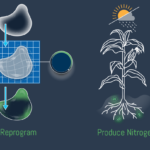New York-based startup Sketchfab has been acquired by Epic Games, the company behind Fortnite and Unreal Engine. Sketchfab has been building a platform to upload, download, view, share, sell and buy 3D assets. Essentially, it is the leading repository for 3D files on the web.
Epic Games isn’t disclosing the terms of the deal. Sketchfab will still operate as a separate brand and offering. Epic Games also says that all integrations with third-party tools will remain available, including with Unity.
The deal makes a ton of sense as Epic Games has been developing — and acquiring — some of the most popular creation tools. Unreal Engine has been one of the most popular video game engines of the past couple of decades.
More recently, Unreal Engine has been used for different use cases beyond video games, such as special effects, 3D explorations of virtual worlds, mixed reality projects and more.
But an engine without assets is pretty useless. That’s why creators either design their own 2D and 3D assets, outsource this process or buy assets directly. It led to the creation of an entire ecosystem of assets and creators.
Epic Games has its own Unreal Engine marketplace, but Sketchfab has been working on building the definitive 3D marketplace for many years with three important pillars — technology, reach and collaboration.
On the technology front, Sketchfab lets you view 3D models on any platform. The Sketchfab viewer works with all major browsers on both desktop and mobile — you can see an example on Sketchfab. It also works with VR headsets. You can upload 3D models from your favorite 3D modeling app, such as Blender, 3ds Max, Maya, Cinema 4D and Substance Painter.
Sketchfab can also convert any format into glTF and USDZ file formats. Those formats work particularly well on Android and iOS.
When it comes to reach, Sketchfab has grown tremendously over the years. In 2018, the company shared some metrics — 1 billion views, 2 million members and 3 million 3D models. Around the same time, the company launched a store so that creators can buy and sell assets directly on the platform.
Finally, Sketchfab launched an interesting feature for companies that work with 3D models all the time — Sketchfab for Teams. It’s a software-as-a-service play that lets you share a Sketchfab account with the rest of the team. Essentially, it works a bit like a shared Google Drive folder — but for 3D models.
With today’s acquisition, Epic Games is making some immediate changes. Starting today, store fees have been reduced from 30% to 12% — just like on the Epic Games Store. The company lowered commissions on ArtStation immediately after acquiring ArtStation, as well.
As for Sketchfab users paying a monthly subscription fee, everything is a bit cheaper now. All features in the Plus plan are now available for free, all features in the Pro plan are available to Plus subscribers, etc.
“We built Sketchfab with a mission to empower a new era of creativity and provide a service for creators to showcase their work online and make 3D content accessible,” Sketchfab co-founder and CEO Alban Denoyel said in the announcement. “Joining Epic will enable us to accelerate the development of Sketchfab and our powerful online toolset, all while providing an even greater experience for creators. We are proud to work alongside Epic to build the Metaverse and enable creators to take their work even further.”
With the acquisitions of ArtStation and Capturing Reality, Epic Games has been on an acquisition spree. It’s clear that the company wants to build an end-to-end developer suite for the gaming industry.
Powered by WPeMatico

